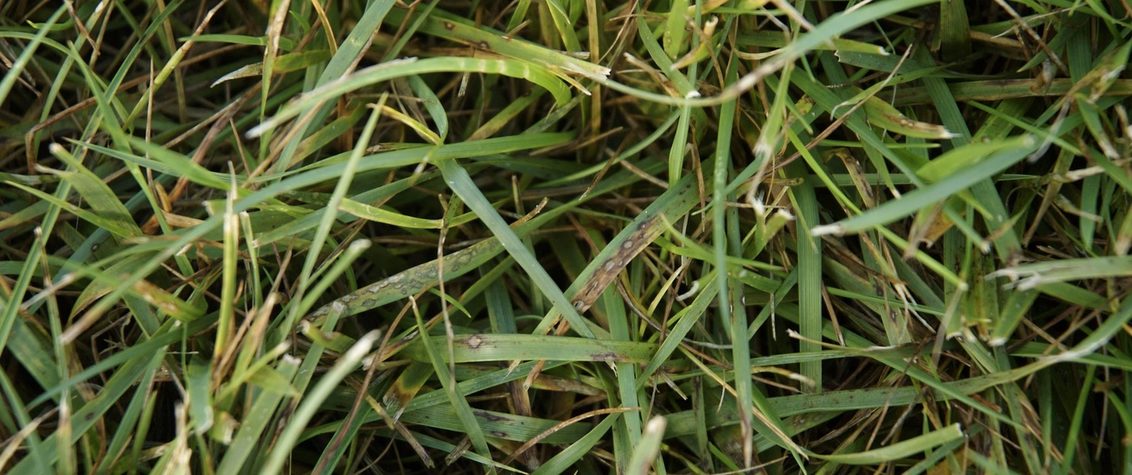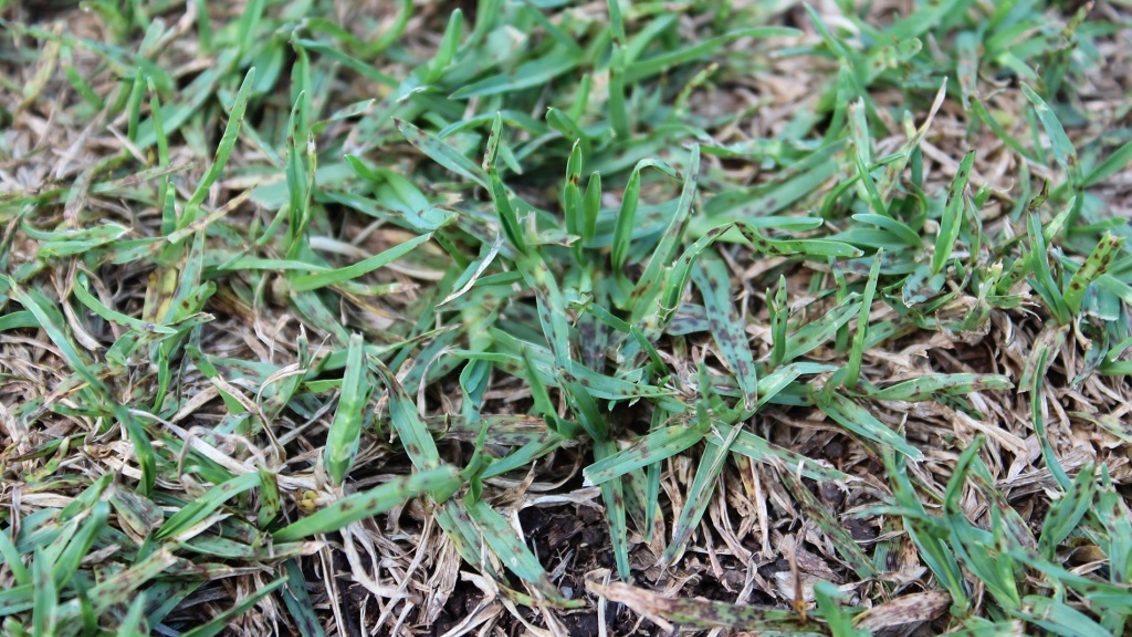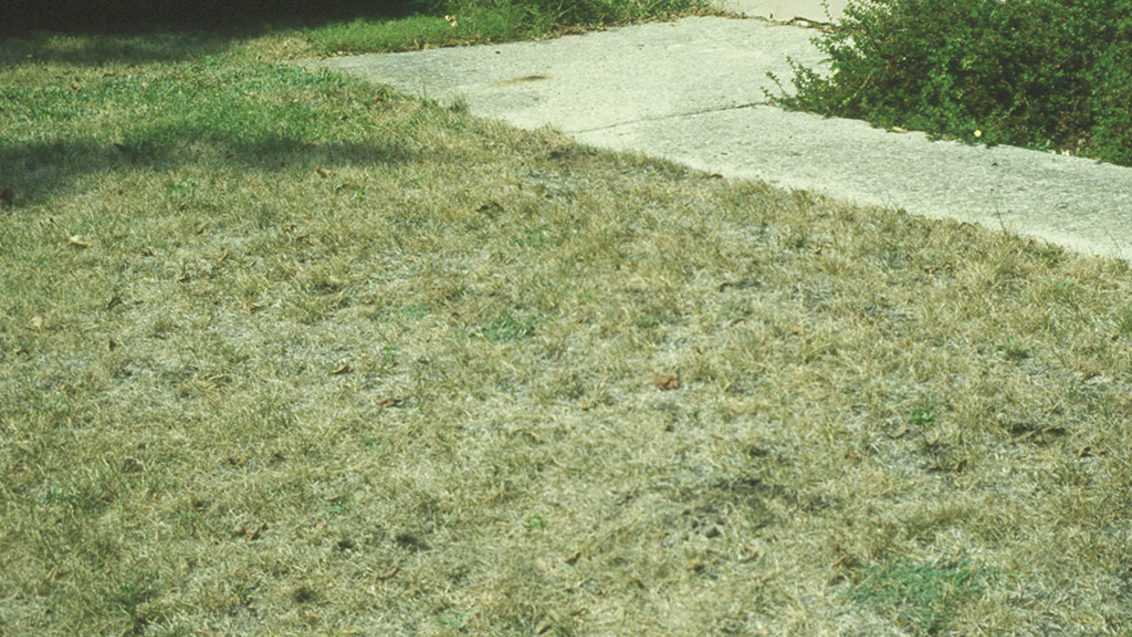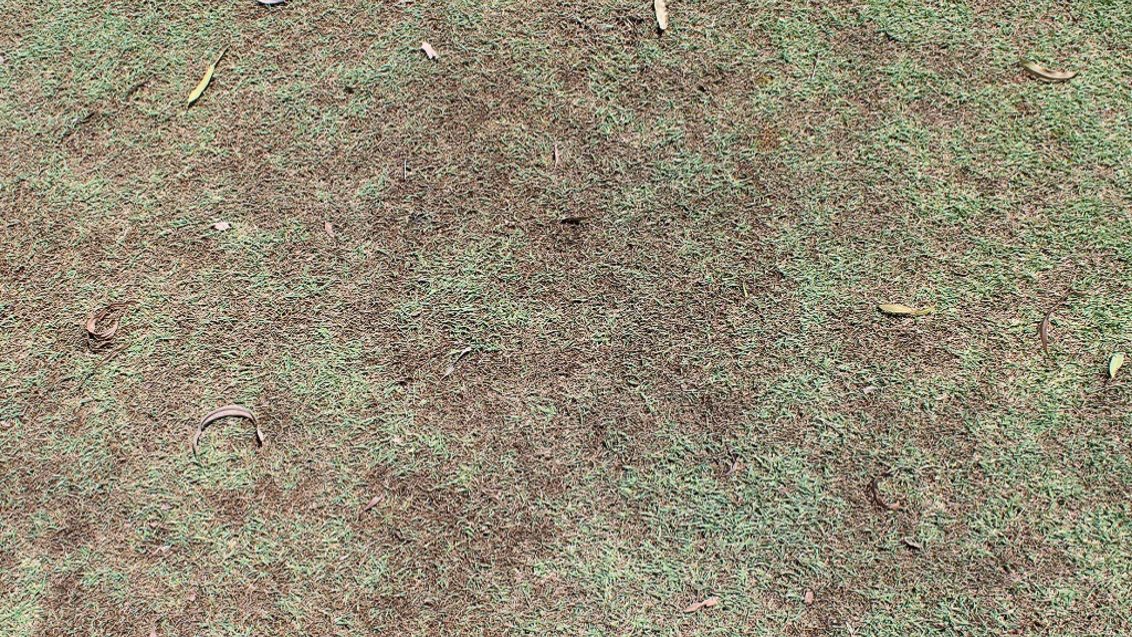Leaf Spot / Melting Out
Turf Disease
Leaf Spot (melting-out) causes purplish-brown to black spots with tan centers on the leaf blade and sheath. The lower leaves of the infected plants become shriveled and blighted. When melting-out infection is severe, almost all of the leaves and tillers die, causing severe thinning of the stand-or melting-out.
On cool-weather turfgrass, melting-out typically follows the appearance of leaf spots.
Susceptible Turfgrasses: Creeping Red Fescue, Kentucky Bluegrass, Annual Bluegrass, Perennial Ryegrass, tall Fescue, and some varieties of Bentgrass and Bermudagrass.

Caused by: Drechslera spp. and / or Bipolaris spp.
Conditions favouring Disease:
Leaf spot favours temperatures between 4°C and 26°C. It occurs in areas that experience more than 10 hours a day of foliar wetness for several consecutive days. It also favours high amounts of nitrogen and a low mowing height.
Integrated Turf Management:
- Increase the height of cut
- Reduce turf stress by using lightweight equipment.
- Avoid the application of high rates of water-soluble nitrogen in the Spring
- Minimise the amount of shade
- Irrigate turf deeply and as infrequently as possible
- Reduce thatch in the early Spring or Autumn for cool-season turfgrass and in the Summer for warm-season turfgrass
Fungicidal Control:
Banner and Heritage have label recommendations for Leaf Spot / Melting Out in the United Arab Emirates



